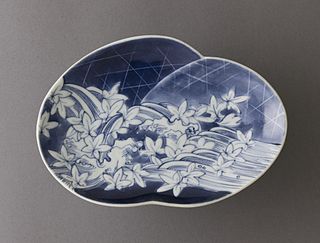 W
WArita ware is a broad term for Japanese porcelain made in the area around the town of Arita, in the former Hizen Province, northwestern Kyūshū island. It is also known as Hizen ware after the wider area of the province. This was the area where the great majority of early Japanese porcelain, especially Japanese export porcelain, was made.
 W
WHakuji (白磁) is a form of Japanese pottery and porcelain, normally white porcelain, which originated as an imitation of Chinese Dehua porcelain. Today the term is used in Japan to refer to plain white porcelain.
 W
WHasami ware is a type of Japanese pottery traditionally from Hasami, Nagasaki prefecture. Originally produced for common people, Hasami porcelain has a history of 400 years.
 W
WHirado ware is a type of Japanese porcelain mostly made at kilns at Mikawachi, Sasebo, Nagasaki, and it is therefore also known as Mikawachi ware . It was made in the former feudal Hirado Domain, which owned the kilns, and was responsible for establishing and directing their production.
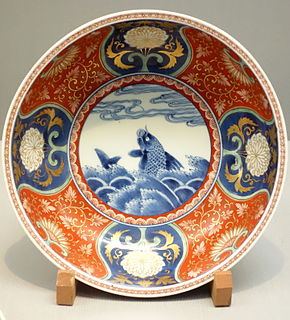 W
WImari ware is a Western term for a brightly-coloured style of Arita ware Japanese export porcelain made in the area of Arita, in the former Hizen Province, northwestern Kyūshū. They were exported to Europe in large quantities, especially between the second half of the 17th century and the first half of the 18th century.
 W
WJapanese export porcelain includes a wide range of porcelain that was made and decorated in Japan primarily for export to Europe and later to North America, with significant quantities going to south and southeastern Asian markets. Production for export to the West falls almost entirely into two periods, firstly between the 1650s and 1740s, and then the period from the 1850s onwards.
 W
WKakiemon is a style of Japanese porcelain, with overglaze decoration called "enameled" ceramics. It was originally produced at the factories around Arita, in Japan's Hizen province from the Edo period's mid-17th century onwards. The style shares much in common with the Chinese "Famille Verte" style. The quality of its decoration was highly prized in the West and widely imitated by major European porcelain manufacturers during the Rococo period.
 W
WThe Kakiemon elephants are a pair of 17th century Japanese porcelain figures of elephants in the British Museum. They were made by one of the Kakiemon potteries, which created the first enamelled porcelain in Japan, and exported by the early Dutch East India Company. These figures are thought to have been made between 1660 and 1690 and are in the style known as Kakiemon. They were made near Arita, Saga on the Japanese island of Kyūshū at a time when elephants would not have been seen in Japan.
 W
WKawana ware refers to a type of Japanese porcelain produced in and around the area of Kawana (川名), today Kawanayama-chō (川名山町) in Shōwa-ku, Nagoya, central Japan. It is of the sometsuke (染付) blue and white pottery type, but notable for using the English technique of transfer printing.
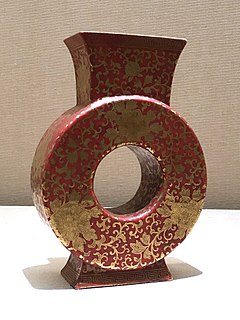 W
WKotō ware is a type of Japanese porcelain traditionally made in Hikone, Shiga in the former Ōmi Province.
 W
WKutani ware is a style of Japanese porcelain traditionally supposed to be from Kutani, now a part of Kaga, Ishikawa, in the former Kaga Province. It is divided into two phases: Ko-Kutani, from the 17th and early 18th centuries, and Saikō-Kutani from the revived production in the 19th century. The more prestigious Ko-Kutani wares are recognised by scholars to be a complex and much mis-represented group, very often not from Kutani at all.
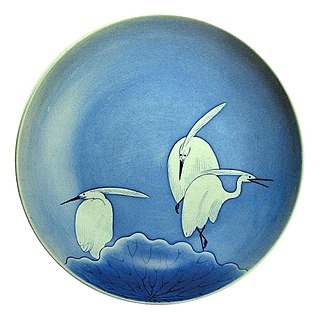 W
WNabeshima ware is a type of Japanese pottery, specifically an unusually high-quality porcelain Arita ware. It was produced in Lord Nabeshima of Saga Domain's kiln at Okawachi near Arita in the Edo period, for the use and profit of the family. The name therefore derives from the family. The Okawachi kiln was already in use, and continued to make other wares at the same time. Production began around 1700, and continued until the late 19th century, with similar wares being produced elsewhere by descendants of the master lineage to the present day
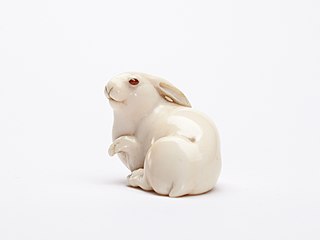 W
WA netsuke is a miniature sculpture that was invented in 17th-century Japan to serve a practical function.
 W
WNikko Company is a Japanese manufacturer of fine ceramics, known for its tableware products.
 W
WNoritake Co., Limited , commonly known as "Noritake," is a tableware and technology company headquartered in Nagoya, Aichi Prefecture, Japan.
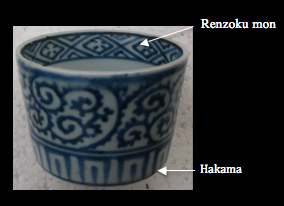 W
WSoba choko (そば猪口) are 3 cm–9 cm cup-sized porcelain vessels. Mass-produced for domestic use in Japan in the Edo Imari period soba choko pro (1620–1886), soba choko were traditionally bundled in a configuration of five.
 W
W"Blue and white pottery" covers a wide range of white pottery and porcelain decorated under the glaze with a blue pigment, generally cobalt oxide. The decoration is commonly applied by hand, originally by brush painting, but nowadays by stencilling or by transfer-printing, though other methods of application have also been used. The cobalt pigment is one of the very few that can withstand the highest firing temperatures that are required, in particular for porcelain, which partly accounts for its long-lasting popularity. Historically, many other colours required overglaze decoration and then a second firing at a lower temperature to fix that.
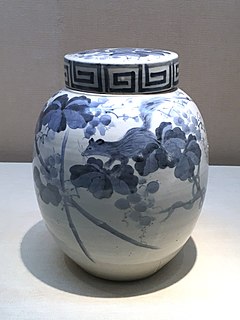 W
WTobe ware is a type of Japanese porcelain traditionally from Tobe, Ehime, western Japan. It is of the sometsuke (染付) blue and white pottery type.
 W
WToto Ltd. , stylized as TOTO, is the world's largest toilet manufacturer. It was founded in 1917, and is known for developing the Washlet and derivative products. The company is based in Kitakyushu, Japan, and owns production facilities in nine countries. The name "Toto" is an abbreviation of the two Japanese words forming its full name, Tōyō Tōki .